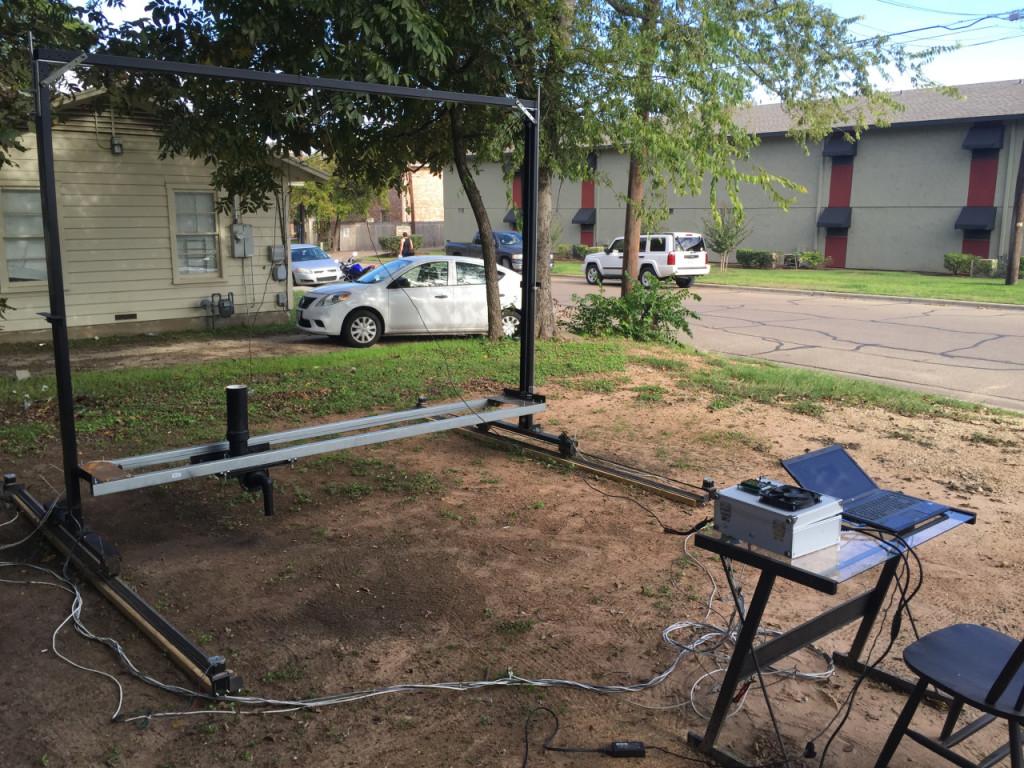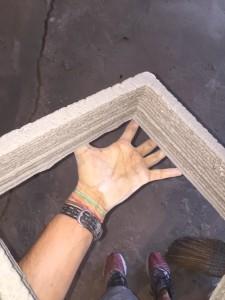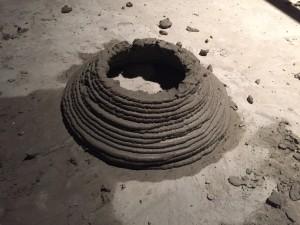 Concrete 3D printers are big business right now, with major companies in the US, China, the Netherlands and more investing in developing a large-scale machine capable of instantly fabricating large concrete structures and hopefully even an entire house. But big businesses aren’t the only ones looking into 3D printing with concrete; the maker community has also set its sights on large-scale construction printers. And while printers made in makerspaces may not always be the prettiest devices around, they’re doing a much better job than most people would give them credit for.
Concrete 3D printers are big business right now, with major companies in the US, China, the Netherlands and more investing in developing a large-scale machine capable of instantly fabricating large concrete structures and hopefully even an entire house. But big businesses aren’t the only ones looking into 3D printing with concrete; the maker community has also set its sights on large-scale construction printers. And while printers made in makerspaces may not always be the prettiest devices around, they’re doing a much better job than most people would give them credit for.
Over the summer when Baylor University of Texas mechanical engineering student Alex Le Roux revealed his first concrete 3D printer it was already a surprisingly robust machine. With a build area of 8’ x 8’ x 8′, a printing speed of about 50 millimeters a second and capable of layer heights of .75 cm he was already coming pretty close to what the big companies were doing. All on a shaky printer built in his garage that was made with a wooden frame for about $1500 in parts. But Le Roux was always up front with the fact that this first printer was just a work in progress and a proof of concept that would need to be upgraded.
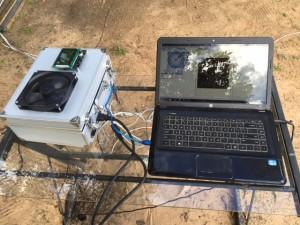 This week Le Roux unveiled version 2.0 of his home built concrete 3D printer and it offers some pretty notable improvements. The most obvious upgrade on the new 2.0 printer is the expanded 10’ x 10’ x 10’ build area that allows him to 3D print some massive solid concrete parts. Le Roux also added some significant improvements to the printers electronic and mechanical hardware, which helps it reach some impressive printing speeds upwards of one foot per second. He also improved the concrete flow rates, which are now up to almost 4 liters per second. And of course 2.0 swapped the shaky wood frame for a sturdy, metal frame that prevents excess shaking while printing at its higher speeds, allows the concrete to safely flow faster and produces more precise layering and detail.
This week Le Roux unveiled version 2.0 of his home built concrete 3D printer and it offers some pretty notable improvements. The most obvious upgrade on the new 2.0 printer is the expanded 10’ x 10’ x 10’ build area that allows him to 3D print some massive solid concrete parts. Le Roux also added some significant improvements to the printers electronic and mechanical hardware, which helps it reach some impressive printing speeds upwards of one foot per second. He also improved the concrete flow rates, which are now up to almost 4 liters per second. And of course 2.0 swapped the shaky wood frame for a sturdy, metal frame that prevents excess shaking while printing at its higher speeds, allows the concrete to safely flow faster and produces more precise layering and detail.
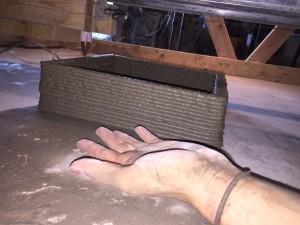 The printer would primarily be used to print large-scale concrete components that could be combined into larger construction projects, but with 2.0’s new build expanded envelope that’s just the beginning. Le Roux could potentially 3D print an entire, albeit small, house using his new printer. If he’s capable of printing a continuous flow of small houses, just imagine what a machine like this could do for the homeless in just a few days. Just with one printer he could put a serious dent in the homeless population in a matter of weeks, not to mention all of the hipsters that would beg for their own 3D printed tiny houses.
The printer would primarily be used to print large-scale concrete components that could be combined into larger construction projects, but with 2.0’s new build expanded envelope that’s just the beginning. Le Roux could potentially 3D print an entire, albeit small, house using his new printer. If he’s capable of printing a continuous flow of small houses, just imagine what a machine like this could do for the homeless in just a few days. Just with one printer he could put a serious dent in the homeless population in a matter of weeks, not to mention all of the hipsters that would beg for their own 3D printed tiny houses.
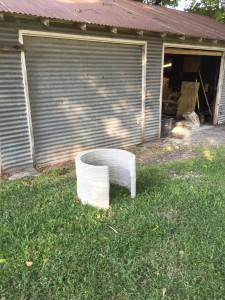 The layer height alone is an impressive upgrade from the previous model, not to mention the higher detail and ability to handle precise curves and corners. The new printer is capable of fully solid and detailed prints that simply need to air dry, just like standard concrete. Of course they would need to be finished off with some sort of insulation and finishing, but that would be the same with any concrete. And being able to print large, freestanding concrete structures is a massive upgrade from having to pour concrete into complicated molds, wait for them to dry, and then put them into place.
The layer height alone is an impressive upgrade from the previous model, not to mention the higher detail and ability to handle precise curves and corners. The new printer is capable of fully solid and detailed prints that simply need to air dry, just like standard concrete. Of course they would need to be finished off with some sort of insulation and finishing, but that would be the same with any concrete. And being able to print large, freestanding concrete structures is a massive upgrade from having to pour concrete into complicated molds, wait for them to dry, and then put them into place.
The key to understanding the usefulness of Le Roux’s printer is to not think of it as a large electronic device and start imagining it as a piece of construction equipment. The device was designed to be dismantled and then reassembled quickly, so it is simple to transport directly to a construction job site, and set up in about thirty minutes. All of the electronic components are shielded and water tight, so other than the computer used to run it, everything is completely water resistant. This printer was created to work on a dirty job site, not in a spotless lab.
Take a look at the concrete 3D printer close up here, and a look here at the printer building a different shape of object.
Like his first iteration, Le Roux based the design of his large-scale concrete 3D printer on basic RepRap concepts and technology, making it almost as simple to run and set up as the first. That also makes it easy to develop and quite inexpensive, both of which would be huge benefits to attracting early adopters. With only a month before he graduates college, Le Roux says that he’s at the point in the process when he is now open to working with interested individuals and companies who may be willing to invest in his printers continued development and helping him take it to market. You can keep an eye on the progress of Le Roux’s concrete 3D printer development on his blog. Discuss this large 3D Printer in the Concrete 3D Printing forum thread on 3DPB.com.
Subscribe to Our Email Newsletter
Stay up-to-date on all the latest news from the 3D printing industry and receive information and offers from third party vendors.
You May Also Like
Profiling a Construction 3D Printing Pioneer: US Army Corps of Engineers’ Megan Kreiger
The world of construction 3D printing is still so new that the true experts can probably be counted on two hands. Among them is Megan Kreiger, Portfolio Manager of Additive...
US Army Corps of Engineers Taps Lincoln Electric & Eaton for Largest 3D Printed US Civil Works Part
The Soo Locks sit on the US-Canadian border, enabling maritime travel between Lake Superior and Lake Huron, from which ships can reach the rest of the Great Lakes. Crafts carrying...
Construction 3D Printing CEO Reflects on Being Female in Construction
Natalie Wadley, CEO of ChangeMaker3D, could hear the words of her daughter sitting next to her resounding in her head. “Mum, MUM, you’ve won!” Wadley had just won the prestigious...
1Print to Commercialize 3D Printed Coastal Resilience Solutions
1Print, a company that specializes in deploying additive construction (AC) for infrastructure projects, has entered an agreement with the University of Miami (UM) to accelerate commercialization of the SEAHIVE shoreline...


